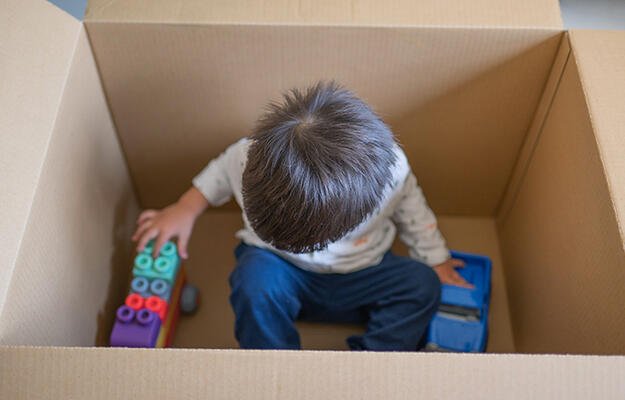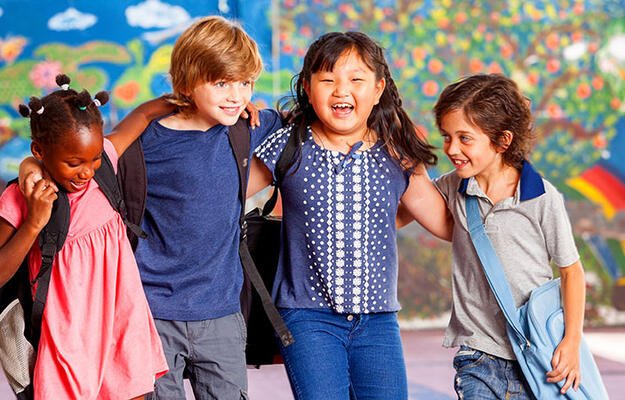
(Prasit photo/Getty Images)
How Housing Affected Learning Outcomes during the Pandemic
What Happens When Your School and House Are the Same Place?
In spring 2020, because of the COVID-19 pandemic, students across the country experienced a drastic shift in their schooling as classes were first paused, then cancelled, and eventually moved to online or remote formats. In the following school year, students experienced a range of instruction methods. Some students stayed fully remote, some returned to in-person classes, and others experienced hybrid learning, a mix of both in-person and remote learning.
For millions of students during this period, this shift meant their housing and classrooms had suddenly become the same place. As a result, for remote and hybrid students, the already important role that housing plays in determining educational outcomes became even more significant.
How did the type of instruction students received vary during the pandemic, and how did it affect academic outcomes?
According to Burbio’s K–12 School Opening Tracker, at the beginning of the 2020–21 school year, about 60 percent of schools nationally were fully virtual, with in-person and hybrid formats each being used in around 20 percent of schools. By the end of January 2021, schools were conducting virtual and in-person classes at similar rates (39 percent and 38 percent) while hybrid instruction was being used in 24 percent of schools nationwide.
As the percentage of schools using each instruction method varied over time, there was also large variation in instruction methods across different demographics and states. On average, schools with high poverty levels spent an additional 5.5 weeks in remote instruction during the 2020–21 school year compared with schools with low or medium poverty levels. In the same year, on average, white students saw lower rates of remote learning compared with Asian, Black, and Hispanic students and students in states like Wyoming, Arkansas, and Florida attended school almost exclusively in-person while most students in states such as California, Maryland, and Virginia attended school virtually for the entire school year.
Although most students returned to in-person instruction by December 2021, the lingering effects of the transition to remote learning during the 2020–21 school year on academic outcomes are still being felt today. One analysis of history, math, and reading test scores found that students’ rates of learning declined significantly during the pandemic and subsequent years when compared with prepandemic years. Another analysis found the estimated drop in math test scores for students in fall 2021 compared with fall 2019 was significantly larger than estimated impacts from other large school disruptions, like Hurricane Katrina.
These learning losses have also been found to disproportionately affect more-vulnerable student groups. Test score gaps increased between schools with low poverty and high poverty levels by about 20 percent for math scores and 15 percent for reading scores during the 2020–21 school year. Remote learning was also found to have been a primary driver of the increasing achievement gaps between white students and students of color and between students from families with high incomes and families with low incomes. Additionally, students of color were more likely to experience remote learning than white students.
What housing and academic challenges did students face while remote learning?
For students who were hybrid or remote learning, there were also broad variations in how their housing situations affected their ability to learn—specifically, access to technology, access to sufficient space, and access to housing were all potential barriers to learning. Access to stable internet, often known as the digital divide, and access to home computers varied greatly across student demographics and geographies.
One analysis found that when classes were first moved online in the spring of 2020, more than 16 million students nationwide did not have access to high-speed home internet, and more than 7 million students lacked access to a home computer or tablet. Furthermore, students of color, students from families with low incomes, and students living in rural communities were disproportionately likely to lack access to high-speed internet or a computer in their homes.
While many districts made efforts to provide internet hot spots or personal computers to students, at the beginning of 2021, an estimated 12 million students still lacked access to fast and reliable internet, a working computer or tablet, or both. The digital divide has been shown to have led to serious disparities in learning outcomes between students. An Urban Institute analysis found that even before the pandemic, eighth graders who lacked computer or internet access were, on average, 27 months behind students who had access in both math and reading standardized test scores.
Beyond technology, many students may have lacked an adequate environment from where they could conduct remote learning. Research has found that children from families with low incomes and Black and Latine children are more likely to live in more crowded households. Overcrowding may have created unique barriers during the period of remote learning. One survey of students in 2020 found nearly 1 in 3 students reported they “never” or only “sometimes” had a quiet place to work at home. Experts have also flagged crowded households as a major barrier to remote learning during the pandemic.
Many students also did not have access to stable housing at all. For students experiencing homelessness, the transition to remote learning may have been particularly challenging, as the lack of stable housing compounded learning challenges. During the pandemic, schools often failed to identify and track students experiencing homelessness, which may have led to students losing out on eligibility for transportation, technology, or other resources. Students without stable housing also faced declining attendance rates, lack of access to Wi-Fi in shelters or other temporary housing situations, and disruptive school changes as their families moved between different neighborhoods.
What can be done to address learning loss from the pandemic?
Though the pandemic caused significant disruption to students’ schooling, the losses in learning do not have to be permanent. As part of the American Rescue Plan Elementary and Secondary School Emergency Relief Fund (ARP ESSER), schools were given more than $122 billion to address the pandemic’s impact on students. State governments and school districts have already allocated billions of dollars from the ARP ESSER, and effective spending of these funds with other supports could help improve educational outcomes. Some promising strategies include the following:
- Improving access to targeted tutoring for students. Programs known as “high-dosage tutoring” use intensive learning in small groups and have been shown to create large learning gains for many students. They could be especially effective for students who attend under resourced schools or are from families with low incomes.
- Providing students with fast, reliable home internet access and computers. Working to close the digital divide could help reduce disparities in learning, as well as better prepare students for potential disruptions in learning that force classes online.
- Connecting students to resources that improve housing stability. School officials can be an important resource for students, helping connect them to key resources and services that can help ensure housing stability and educational success.
- Supporting students’ beyond solely their educational needs. Giving students the opportunity to access mental and emotional health resources like counselors or support groups can be help ensure students are able to achieve success after the pandemic.
Though none of these strategies can single-handedly improve educational outcomes for all students, they provide promising evidence for continued investment and support in policies to address students’ learning disparities and disruptions caused by the pandemic.


